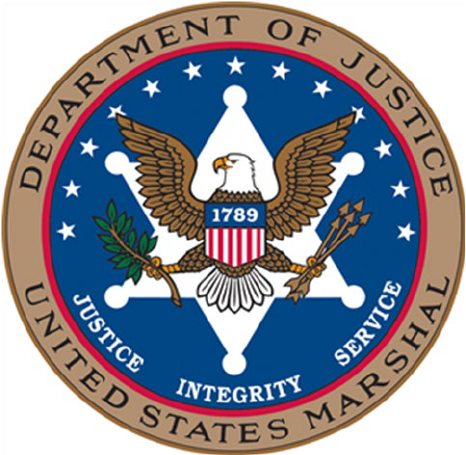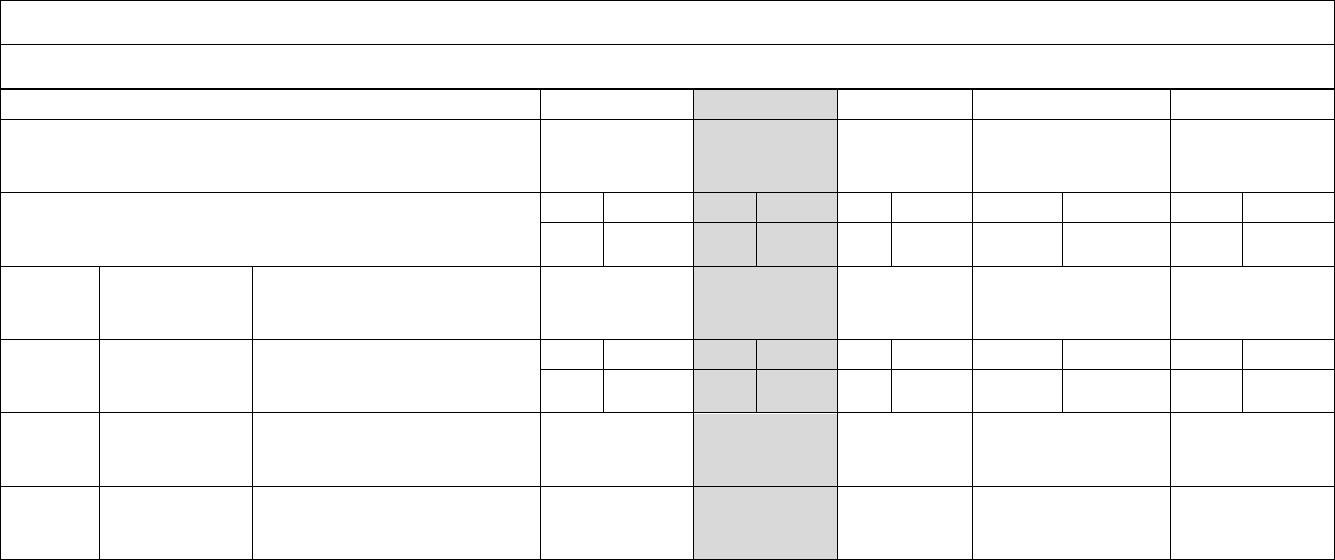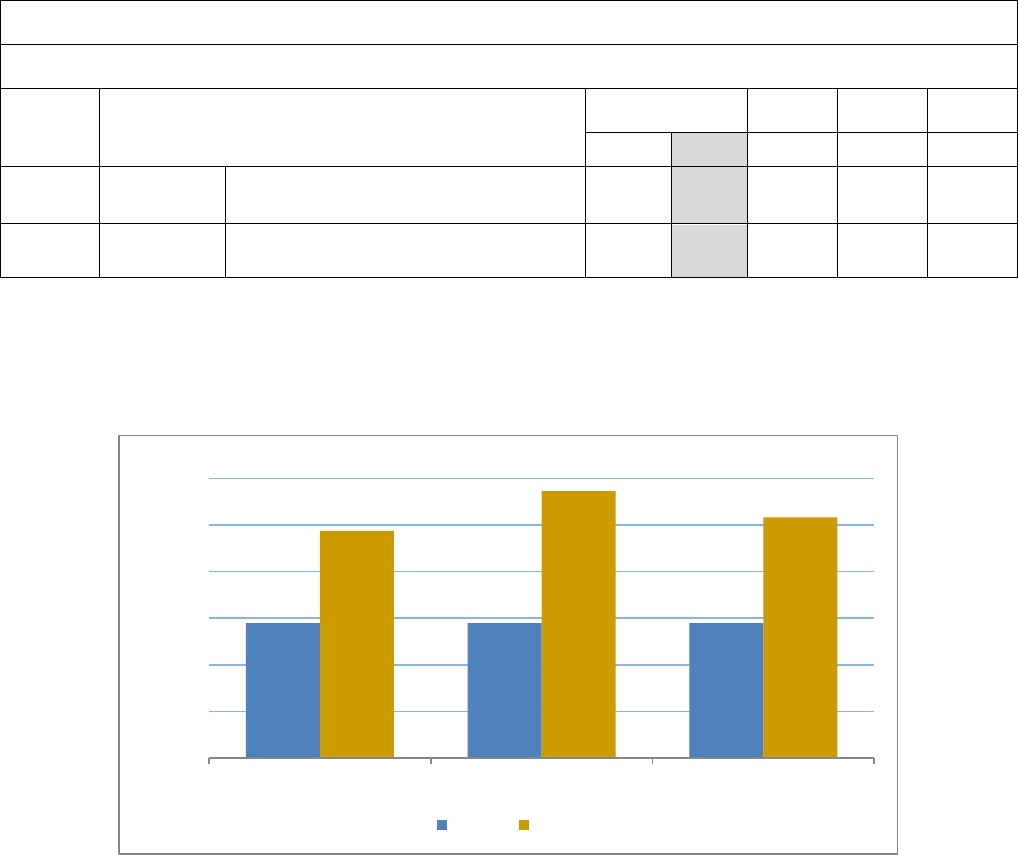
United States Marshals Service
FY 2024 Performance Budget
President’s Budget
Justice Prisoner and Alien Transportation System
Revolving Fund
March 2023
This page intentionally left blank.
i
Table of Contents
I. Overview ........................................................................................................................... 1
A. Budget Assumptions ................................................................................................................ 2
B. Efficiencies, Savings, and Increased Value............................................................................... 2
C. Budget Summary ..................................................................................................................... 5
D. Revenues and Expenses ........................................................................................................... 5
II. JPATS Performance Challenges ...................................................................................... 5
A. Invest in Our Workforce: ......................................................................................................... 6
B. Safe and Efficient Prisoner Transport: ...................................................................................... 7
C. Sustainable Infrastructure, Assets and Resources: .................................................................... 9
III. Performance Tables ........................................................................................................ 10
1. Performance and Resources Table .......................................................................................... 10
2. Performance, Resources, and Strategies ................................................................................. 12
IV. JPATS Operating Budget ............................................................................................... 13
Chart 1: Changes in the Cost of Operations, FY 2022 – 2024 ...................................................... 13
Chart 2: Sources of New Orders and Revenue, FY 2022 – 2024 .................................................. 13
Chart 3: Revenues and Expenses ................................................................................................. 14
V. Exhibits
A. Organizational Chart
B. Summary of Requirements
C. FY 2023 Program Increases / Offsets by Decision Unit (Not Applicable)
D. Resources by DOJ Strategic Goals and Strategic Objective
E. Justification for Technical and Base Adjustments (Not Applicable)
F. Crosswalk of 2022 Availability
G. Crosswalk of 2023 Availability
H. Summary of Reimbursable Resources
I. Detail of Permanent Positions by Category
J. Financial Analysis of Program Changes (Not Applicable)
K. Summary of Requirements by Object Class
N. Schedule of Aircraft
Q. Awards
ii
This page intentionally left blank.
1
I. Overview
The Justice Prisoner and Alien Transportation System (JPATS) coordinates and executes
prisoner and detainee movements safely, securely, and humanely in a timely and economical
manner. JPATS operates as a revolving fund with total operating costs reimbursed by its
customer agencies, the U.S. Marshals Service (USMS) and the Federal Bureau of Prisons (BOP).
JPATS also transports Department of Defense and state and local prisoners on a reimbursable,
space-available basis.
Using USMS and BOP projected prisoner movement requirements, JPATS develops total
projected costs associated with air transportation. JPATS uses OMB Circular A-126 guidelines
to identify fixed and variable cost categories and applies activity-based costing to develop flight
hour rates. JPATS bills its customers based on the number of flight hours and the number of
seats used to move prisoners/detainees.
As a revolving fund, JPATS operates with numerous benefits, including but not limited to:
• the no-year account mitigates risks of unanticipated customer program changes or cost
variances providing a consistent funding stream;
• the concept of full-cost recovery achieves program goals for transparency, equitable
distribution of costs, and adheres to industry best practices;
• the revolving fund allows for multi-year funding and leasing authority for capital
acquisitions; and
• the authority to retain proceeds from disposal of aircraft, support equipment, and parts
encourages good stewardship and disciplined asset management.
The JPATS revolving fund stabilizes costs for customer agencies because it can absorb
fluctuations in operating expenses such as fuel and aircraft maintenance on a short-term basis.
JPATS sets aside funds to replace aging aircraft, major aircraft parts, aircraft Ground Support
Equipment (GSE), and hangar/facility improvements over time. JPATS also plans procurement
of equipment, maintenance, and operational facility lease agreements when needed.
JPATS is committed to ensuring each scheduled mission is properly staffed with a well-trained,
professional crew. Each mission includes qualified pilots and aircraft maintenance personnel to
safely operate the aircraft. Experienced law enforcement and security officers ensure crew and
airlift site safety and the safe, secure transfer of prisoners. Each flight is also staffed by a
certified medical specialist who validates required screenings and medical records ensuring all
prisoners are medically stable and fit to fly.
JPATS continually strives to improve the quality of prisoner movement services, optimize the
transportation network, and produce efficiencies for the customer.

2
A. Budget Assumptions
Key assumptions for this budget formulation include:
• Costs associated with operating and maintaining complex, advanced aircraft continue to
increase. The FY 2024 Budget reflects the planned cyclical replacement of JPATS-
owned B-737-400 “Classic Series” aircraft. Classic series asset replacement will
continue as these aging aircraft are replaced with Next Generation (Next Gen) 737s from
the aviation industry. Next Gen aircraft offer JPATS employees, customers, and
stakeholders greater capabilities and more value in the form of reliability, fuel efficiency,
and operational safety. Next Gen aircraft provide improved technologies and greater
capabilities, but at increased transportation unit costs. JPATS completed Cyclical
Replacement Phase I (of III) in FY 2022 with the purchase of a B737-800 and recently
finalized the sale of the legacy B737-400. JPATS is ready to initiate Phase II.
• The price per gallon of jet fuel continues to fluctuate. Less expensive contract fuel is
purchased wherever possible but is not always available at mission critical airlift stops.
• Ownership of large aircraft ensures greater availability for missions, affords surge
capability, and is more cost-effective than leasing aircraft.
B. Efficiencies, Savings, and Increased Value
JPATS continually examines its operational areas to provide reliable and safe quality services
while seeking to increase efficiencies and generate savings for the customer agencies.
Adapting to Operate Safely and Continue the Mission during the COVID-19 Pandemic
The COVID-19 pandemic created unprecedented challenges for JPATS. Under very difficult
circumstances, JPATS continued to carry out its statutory obligations by transporting Federal
court-ordered detainees and other prisoners for the Department of Justice (DOJ). With little
notice, the pandemic forced JPATS to shift focus from ongoing efforts to increase efficiencies to
implementing and monitoring COVID-19 prisoner handling procedures and employee safety
protocols designed to limit exposure and prevent virus transmission. As with other agencies,
JPATS response to COVID-19 has evolved over time.
In early March 2020, JPATS created COVID-19 screening procedures in partnership with the
USMS and the BOP that included temperature checks and the use of personal protective
equipment (PPE) by prisoners and staff, based on Centers for Disease Control (CDC) guidance.
Additionally, JPATS coordinated the inclusion of COVID-19 screening protocols that require
facilities to screen prisoners prior to their clearance for transportation. These mandatory
COVID-19 symptom screenings and the donning of PPE greatly reduced the potential for virus
exposure and transmission. Since the early stages of the pandemic, JPATS coordinated with the
BOP and the USMS and instituted COVID-driven capacity limits for ground and air
transportation assets. When necessary, transportation was limited to only those prisoners with
mandatory movement requests (e.g., medical study orders). COVID-19 screening procedures
and maximum PPE are consistently used to reduce virus exposure and transmission.

3
As a result of BOP institutions restricting intake of prisoners, an unprecedented backlog of
prisoner transport movement requests occurred, peaking at 21,000 (compared to a previous
historical high of approximately 10,000). At the same time, the BOP implemented a COVID-19
testing and quarantine process that mandated tested and non-tested prisoners not be combined on
the same transports. This mandate resulted in separated BOP and USMS transports. Since the
JPATS Management Information System (JMIS) is designed to create integrated manifests that
combine both BOP and USMS prisoners for optimal seat utilization, the program could not
readily be used in the restricted COVID-19 environment. The JPATS Transportation Team
quickly adjusted and scheduled prisoner movements manually. At the start of FY 2022, BOP
began to allow combined USMS and BOP prisoner transports, on a minimal scale, provided
USMS prisoners were vaccinated. However, general segregration of flights continued
throughout FY 2022 and into FY 2023.
JPATS methodically worked through the backlog of prisoner transport movement requests in
FY 2022, bringing the number down to approximately 8,381 by the end of the fiscal year. This
was accomplished through increased flying hours and the strategic implementation of surge
missions. Based on updated procedures published in the November 30, 2022 modification to the
BOP COVID-19 Response Plan Module 6, JPATS began blending and combining all DOJ
prisoners on all JPATS-scheduled transportation assets on Monday, December 5, 2022. USMS
prisoners are now allowed to co-mingle with prisoners received or moving from BOP
institutions. As of the end of Q1 FY 2023, JPATS returned to a pre-pandemic level of pending
prisoner transport movement requests at approxmiately 6,475. JPATS expects the level of
requests to fluctuate, but anticipates pending movements will remain consistent with pre-
pandemic performance for the foreseeable future.
JPATS Efficiencies
Despite working through a pandemic, JPATS continues to lead optimization efforts to improve
performance and increase efficiency. The data and analysis made possible by JMIS are central to
current and planned program initiatives. More accurate and timely data is now available to help
management analyze program areas, and JPATS is using performance data to identify potential
problems, create solutions, and drive program improvements.
JPATS Savings
The JPATS Large Aircraft Contingency (LAC) initiative creates increased operational stability
and sustained program savings for its partners as expected. Maintaining three JPATS-owned 737
aircraft, in support of Oklahoma City-based operations, ensures optimal availability by providing
a contingency aircraft for use when primary aircraft are undergoing maintenance or when surge
missions are required. With the additional 737, JPATS sustained a 99 percent aircraft
availability rate through FY 2022, allowing for an additional 163 missions to occur without the
need for procuring charters or flying extra missions of the Las Vegas aircraft. Despite the
COVID-19 restrictions imposed, JPATS completed 223,721 prisoner movements in FY 2022.
The Federal Prisoner Detention appropriation would have incurred an estimated $9,000,000 in
additional housing costs if those missions had not occurred. This is based on an average
detention cost of $97.89 per day, while detainees await transfer to the BOP. Ownership of the

4
737-800 and 737-700 aircraft have proven to provide JPATS greater operational flexibility,
fewer logistical concerns due to a common platform for all large aircraft, and a reduced security
risk. With this additional asset, JPATS is now able to readily conduct on-demand flights for its
partners to overseas locations such as the District of Hawaii without external resources. JPATS
conducted its first mission of the newly purchased 737-800 in February 2022, and regularly
conducts flights as required by JPATS’ customers. In FY 2021 and FY 2022, surge missions
reduced stress on USMS districts as COVID-19 restrictions relaxed and ensured the BOP made
progress toward the Executive Order 14006 requirement to eliminate the use of private prison
facilities. Following earlier deactivations of Big Springs, Corrections Corporation of America
(CCA) Leavenworth and CCA Mason, JPATS supported the Executive Order 14006 by
coordinating over 1,300 movements for the deactivation of Northlake in Michigan and over
2,000 movements for Dalby and Reeves II in West Texas. JPATS completed the last
deactivation in November 2022 by moving 1,220 prisoners out of McRae in Georgia.
JPATS Increased Value
JPATS provides value and meets customer expectations by continually reviewing program
performance metrics and accommodating customer requirements. JPATS monitors weekly,
monthly, and quarterly performance, and provides reports to the USMS Director and the JPATS
Executive Committee (JEC) through the JPATS Working Group. JPATS continues to seek
solutions that add value to the program. For example, JPATS intends to present its plan to
execute Phase II of the Cyclical Replacement plan in FY 2023.
The transition of aircraft maintenance providers from the Federal Aviation Administration
(FAA) Universal Service Agreement to an industry leading commercial aircraft maintenance
vendor is another example of increasing value. JPATS negotiated a five-year, $51,000,000
commercial vendor maintenance contract, potentially saving an estimated $6,000,000 (over 10
percent). The vendor is a proven experienced maintainer that provides exceptional maintenance
and repair capabilities, quality aircraft parts service, and contributed to sustaining a 99 percent
Boeing 737 mission reliability rate in FY 2022. Furthermore, during FY 2023, JPATS will re-
compete the maintenance contract, which is anticipated to continue providing increased value for
customers.
JPATS has assessed future stationing options for its Boeing 737-700 in Las Vegas, Nevada.
Based upon an analysis of national prisoner demands, Executive Order 14006, and BOP mission
changes at Leavenworth, JPATS recommended a relocation to Kansas City, Missouri. This
location, along with the primary Oklahoma City operational site, will optimize route
effectiveness and provide higher seat utilization in the national prisoner transportation network.
Stationing aircraft closer to USMS detainee housing and BOP facilities reduces the need for low-
volume flights that increase operating costs. This will also lower the overall in-transit time by
allowing designated prisoners to arrive at their final BOP destinations more quickly.
Consolidating the Las Vegas JPATS location into the larger Kansas City headquarters will
reduce the JPATS footprint from three sites to two and drive further operational efficiencies.
Working with the USMS Human Resources Division (HRD), Financial Services Division (FSD),
Management Services Division (MSD), and the General Services Administration (GSA), JPATS
expects the site relocation to occur in FY 2023.

5
Budget Summary
JPATS Revolving Fund program estimates for Obligation Authority (OA) and Personnel Data
are based upon customers’ projected requirements and estimated carry forward authority.
Financial Operations, FY 2022 – 2024
($ in thousands)
FY 2022
Actual
FY 2023
Estimate
FY 2024
Estimate
Operating 60,639 75,880 78,617
Less Depreciation (2,548) (7,141) (7,289)
Operating Authority 58,091 68,739 71,328
Unobligated Balance-
End of Year*
48,591 57,714 65,003
Total Authority 106,682 126,453 136,331
Civilian Positions 123 123 123
Civilian End Strength 96 113 113
Personal Contract Guards 110 135 135
Average GS Salary $99,056 $103,747 $106,652
Average SES Salary $201,618 $206,685 $216,016
* From SF-133, “Report on Budget Execution and Budgetary Resources,” dated Sep. 30, 2022.
C. Revenues and Expenses
Accumulated Operation Results (AOR) for FY 2022, FY 2023 and FY 2024 are shown below.
The Revenue and Expenses chart on page 14 provides corollary details.
Revenues and Expenses, FY 2022 – 2024
($ in thousands)
FY 2022
Actual
FY 2023
Estimate
FY 2024
Estimate
Revenue*
76,037
75,880
78,617
Cost of Operations (includes depreciation)
(57,981)
(75,880)
(78,617)
Operating Results
18,056
0
0
Non-Operating Adjustment – Other
(110)
0
0
Net Operating Results (NOR)
17,946
0
0
Prior Year AOR
48,671
66,617
66,617
AOR Adjustments
0
0
0
Net Accumulated Operating Results (AOR)
66,617
66,617
66,617
* FY 2024 revenue estimate is updated from the FY 2024 President’s Budget Appendix to correct a USMS error.
6
II. JPATS Performance Challenges
Transporting Federal Prisoners in Support of the American Justice System
Challenge: JPATS must transport prisoners safely, timely, and economically within limited
resources to provide the best value to its customers. JPATS must look for innovative solutions to
create greater efficiency and sustain optimum program performance within the current
transportation infrastructure.
A. Invest in Our Workforce:
Invest in the development of our workforce to ensure a highly skilled, cohesive, and high-
performing team culture.
Strategy: Core Values: Incorporate our core values of integrity, professionalism,
teamwork, and service into everything we do.
JPATS completed improvements to its security program to increase the protective posture, raise
threat awareness, and reduce risk. Starting with operational security, JPATS continues to ensure
professional and competent airlift perimeter and hangar security procedures, by committing to
monthly, quarterly, and annual weapons and tactics training. Additionally, JPATS procured
improved tactical gear, radios, tasers, and firearms to align with USMS and DOJ policies.
JPATS continues to improve intelligence capabilities by providing analysts with additional
database access allowing for more robust risk assessments. These enhancements heighten threat
awareness and provide enhanced security posture improving officer, crew, and public safety.
During FY 2022, JPATS’ operational staff experienced a high volume, over 21%, of vacancies
due to retirements and departures. JPATS subsequently sought to hire operational personnel
with the experience and skill sets necessary for smooth assimilation and minimal impact to the
mission. During the second and third quarter of FY 2022, JPATS identified, interviewed,
selected, and on-boarded six diverse and highly qualified individuals from a list of over 700
applicants. On arrival to JPATS, new Aviation Enforcement Officers (AEO) completed the
USMS Training Division-approved induction program and a rigorous AEO training curriculum
at the Federal Law Enforcement Training Center. This program reduces risk and standardizes
weapons, tactics, and aviation safety training for JPATS operational personnel, enabling JPATS
to sustain its superior aviation safety and enforcement posture.
In FY 2023, JPATS continued coordinating hangar security improvements through the USMS
Judicial Security Division (JSD). JPATS is working with JSD, which is the division responsible
for facility security improvement project management, to complete upgrades in FY 2023.
Upgrades include outdated equipment, addition of new modern equipment and cameras, along
with new servers to accommodate all foreseeable future needs. In addition, the JPATS hangar
security office space was upgraded to enhance security capabilities.
7
B. Safe and Efficient Prisoner Transport:
Maximize safety and efficiencies in prisoner transport through excellence in law
enforcement, aviation, and business environments.
Strategy: Customer Service and Engagement – Improve our services to meet evolving
customer needs.
In concert with USMS and BOP, JPATS continues to implement a project to automate processes
and documents required for prisoner movement into an electronic Movement Packet (MPAC)
system. A paper prisoner movement packet is currently required to accompany the
prisoner. The new system, which uses secure technology, facilitates the transfer of prisoners
from one transport officer or facility to another across DOJ partners by incorporating electronic
movement requests from data provided by USMS and BOP systems. MPAC will increase
efficiency and accuracy by enabling facilities and transport staff to review the documents prior to
movement on a desktop, laptop, or mobile device. Most notably, the review prior to or “just in
time” at airlift sites will reduce errors produced from rekeying data across systems and eliminate
prisoner transfer denials that arise from missing paperwork. Required USMS and BOP
documents will become available in FY 2023 when an updated JPATS mobile application is
released to transport staff and USMS Intergovernmental Agreement (IGA) facilities utilize and
adopt the automated medical Prisoner In-transit form.
Strategy: Administration/Scheduling/Communications – Optimize the management of air
and ground movements.
JPATS’ goal is to automate 80 % of planned prisoner movements requests. Due to the
complexities caused by COVID-19, this goal was unachievable through the first part of the
pandemic. Challenges associated with COVID-19 positive prisoners and quarantine timelines
forced schedulers to manually coordinate and manifest transfers. However, in FY 2022, 79% of
eligible JPATS’ prisoner movement requests were planned through the planning engine. Despite
these overwhelming challenges, 66% of the automated prisoner movements were completed as
scheduled, without human intervention, which allowed transportation specialists to focus on high
priority, complex prisoner transportation schedules.
COVID-19 has significantly affected the timely transportation of prisoners. BOP’s temporary
full lockdown created a significant backlog of prisoner movements. Automated planning
functions were temporarily halted until system adjustments could account for the changing
environment and protocols. Starting the last quarter of FY 2020 and continuing through FY
2022, JPATS modified its automated planning and began to draw down the backlog of prisoner
movement requests; however, BOP-mandated segregation of prisoners and detainees based on
vaccination, testing, and quarantine status, reduced seat utilization and mission efficiency. This
segregation remained in effect and decreased prisoner movement efficiency. With the change in
BOP’s COVID response plan to allow blended flights in December 2022, JPATS refined and
restarted its pre-pandemic automated planning functions.
8
To drive both short-term and longer-term efficiencies, JPATS is investigating ways to further
integrate the transportation hubs with our partners’ housing capacity locations to better support
the overall detainee and prisoner ecosystem. This is especially true with the planned relocation
of the Las Vegas hub to Kansas City.
Strategy: Aviation Safety - Ensure a predictive zero-incident aviation safety program.
JPATS leverages the extensive aviation professional experience of its staff with established
practices and proven technologies to maximize safety, reliably perform to standards, and
minimize risks. The organization continues to enhance its comprehensive aviation Safety
Management System (SMS). JPATS has been recognized by the Federal community for its
program that defines and documents operations and adheres to the International Standards-
Business Aviation Organization (IS-BAO) and Federal Aviation Interagency Committee for
Aviation Policy best practices. JPATS continues to maintain an IS-BAO Stage III Certification,
which is considered the gold standard for safe and effective operations in Federal Aviation and
International Commercial Aviation organizations. JPATS’ most recent IS-BAO audit occurred
in November 2022, which is a requirement of the International Civil Aviation Organization for
aviation operations outside the United States. In FY 2022, JPATS increased flight hours despite
a COVID-19 reduction in overall movements. JPATS achieved this increased activity with zero
accidents or incidents.
In FY 2022, JPATS aviation managers continued to expand aviation training methods and
ensured documentation complied with FAA standards. Their review identified best practices to
implement for maintenance and scheduling personnel, resulting in development of a formal
training program within the aviation department. JPATS continues to transform aviation support
functions and train its personnel for optimal aviation operations. JPATS leveraged local airport
support and cross training by being a major player in an airport accident exercise using our
aircraft and staff. Simultaneously, JPATS continues to explore new technologies such as
predictive analysis tools, enabling the organization to foresee and mitigate risks of potential
incidents or accidents.
Strategy: Intelligence Research Specialist and Intelligence - Ensure known and emerging
threats to security and aviation are effectively countered.
JPATS continues to improve its capability to produce quality and timely intelligence on
prisoners and operational sites to maintain safe and secure missions. JPATS maintains an
Intelligence Research Specialist program that ties into intelligence assets across the USMS and
BOP to develop and share prisoner attributes and threat information relevant to prisoner
operations and transportation. During FY 2022 and ongoing into FY 2023, daily actionable
intelligence reports continue to mitigate risks associated with potential threats during
transportation operations. The program incorporated additional training and access to additional
national databases, furthering its ability to develop and share prisoner attributes and threat
information. JPATS continues to increase the acquisition of prisoner attribute data using JMIS
and Capture and to develop daily intelligence products for its crews to access through mobile
devices.
9
C. Sustainable Infrastructure, Assets and Resources:
Maintain a sustainable infrastructure ensuring available and reliable assets to support service
delivery and customer requirements.
Strategy: Business Intelligence and Reporting – Leverage technology to optimize business
intelligence and reporting.
The COVID-19 pandemic continues to create unprecedented challenges for JPATS and the
national prisoner transportation network. However, moving into FY 2023, a return to stable,
normal operations appears achievable. Access to daily automated reports and dashboards is
critical in making operational and business decisions. These reports are essential in ensuring
BOP and USMS partners are informed of prisoner backlogs in a timely and accurate manner,
enabling all partners to realize prudent decisions to keep the national prisoner transportation flow
moving. Daily snapshots of JPATS data enables quick reactions to these challenges and
communication with partners to make required adjustments all while containing costs to the
government.

10
III. Performance Tables
1. Performance and Resources Table
PERFORMANCE AND RESOURCES TABLE
Decision Unit: Justice Prisoner and Alien Transportation System
RESOURCES ($ in thousands)
Target
Actual
Projected
Changes
Requested (Total)
FY 2022 FY 2022 FY 2023
Current Services
Adjustments and FY
2024
Program Changes
FY 2024
Request
Total Costs and FTE
(reimbursable FTE are included, but
reimbursable costs are bracketed and
not included in the total)
FTE
$000
FTE
$000
FTE
$000
FTE
$000
FTE
$000
113 $70,651 96 $58,091 113 $68,739 0 $2,589 113 $71,328
Strategic
Objective
Type Performance FY 2022 FY 2022 FY 2023
Current Services
Adjustments and FY
2024 Program Changes
FY 2024
Request
Program
Activity
Prisoner Movement
FTE Amount FTE Amount
FTE Amount
FTE Amount FTE Amount
113 $70,651 96 $58,091
113 $68,739 0 $2,589 113 $71,328
5.2
Perf. Measure:
Output Workload
Number of requests for air and
ground transportation of prisoners
108,800 84,186 98,200 (5,600) 92,600
5.2
Perf. Measure:
Output Unit Cost
Transportation unit cost $1,450
$2,580 $1,900 ($150) $1,750

11
PERFORMANCE MEASURE TABLE
Decision Unit: Justice Prisoner and Alien Transportation System
Strategic
Objective
Performance Measure
FY 2022 FY 2023 FY 2024 FY 2025
Target Actual Target Target Target
5.2 Workload
Number of requests for air and ground
transportation of prisoners*
108,800
84,186 98,200 92,600 95,300
5.2 Output Transportation unit cost* $1,450 $2,580 $1,900 $1,750 $1,800
* The FY 2024 target was updated from $1,800 per rate-based prisoner (as reported on the FY 2023 President’s Budget) to $1,750. Target
Workload estimates for FY 2023, FY 2024, and FY 2025 were also reduced compared to the previously reported FY 2023 President’s
Budget projections. Historical transportation unit cost is depicted in the graph below.
Transportation Unit Cost by Fiscal Year
$1,450 $1,450 $1,450
$2,436
$2,863
$2,580
$0
$500
$1,000
$1,500
$2,000
$2,500
$3,000
FY 2020 FY 2021 FY 2022
Target Actual
12
2. Performance, Resources, and Strategies
a. Performance Plan and Report for Outcomes
JPATS routinely builds on partnerships with the USMS and BOP. JPATS’ goals and
objectives are designed to maintain financial and operational responsibilities for transporting
prisoners, conduct effective daily operations, and promote problem resolution and process
improvement at the national level. JPATS leverages technology, participates with the USMS
in implementing Capture, and partners with the BOP to integrate and advance data-sharing
solutions focused on providing more efficient management decision data and reporting
capabilities across the agencies.
JPATS assesses current and potential airlift sites and routes to validate site and route
selection and to develop a standardized process to initiate and complete airlift site
assessments. This process ensures that JPATS regularly revalidates aviation, security, and
business considerations, but also provides its partners a mechanism to request changes that
emphasizes transparency, information sharing, and documentation.
b. Strategies to Accomplish Outcomes
Efficient scheduling and execution of prisoner transfers are the most effective ways JPATS
can reduce bed-space expenses. JPATS achieves this by using automation to create dynamic
scheduling that is responsive to facility capacity constraints and to replace paper-based
processes. JPATS automation reduces errors and ensures better scheduling information.
These benefits reduce refusals during transport and facility exchanges, which subsequently
results in fewer delays and lower contracted bed-space costs.
JPATS supports transportation services through mobile technology. The use of mobile
devices serves to expedite operations, improve data collection and reporting, and reduce risk.
Risk reduction activities with mobile technology components include the provision of
electronic prisoner manifests with prisoner photos and key information to aviation
enforcement officers, real-time weather updates and airport information to JPATS
dispatchers and pilots, and in-flight prisoner medical information to mission paramedics for
communication to medical practitioners during immediate care.
To provide safe, secure, and economical prisoner transportation, JPATS focuses on the safety
of its staff. JPATS applies a two-pronged strategy to maintain its safety culture. First,
JPATS continuously assesses staffing requirements and utilizes employee scheduling
alternatives to ensure personnel with special skills are available on each mission.
Additionally, JPATS consistently conducts specialized aviation law enforcement training for
both employees and contractors to enhance officer safety and standardization.

13
IV. JPATS Operating Budget
Due to timing of the budget submission, Estimated Revenue amounts shown in the charts below
deviate from amounts shown in the Budget Appendix.
Chart 1: Changes in the Cost of Operations, FY 2022 – 2024
($ in thousands)
Chart 2: Sources of New Orders and Revenue, FY 2022 – 2024
($ in thousands)
New Orders
FY
2022
FY
2023
FY
2024
a. Operating Orders from Customers
USMS $51,724 $48,271 $50,633
BOP $24,123 $27,609 $27,984
Other 190 0 0
b. Non-Operating Orders from Customers
USMS 0 0 0
BOP 0 0 0
Other
Total Orders from Customers $76,037 $75,880 $78,617
* FY 2024 revenue estimate is updated from the FY 2024 President’s Budget Appendix to correct a USMS
error.
FY 2022 Actual*
$58,091
FY 2023 Estimate*
$75,880
Pricing Adjustments:
Pricing Adjustments:
Aircraft Fuel
(365)
Aircraft Fuel
306
Aircraft Maintenance
5,260
Aircraft Maintenance
385
Aircraft Leases
1,277
Aircraft Leases
(216)
Civilian Labor
2,678
Civilian Labor
1,261
Guards, Contract Services
1,135
Guards, Contract Services
(311)
Contract Crew
577
Contract Crew
(600)
Facility Expenses
429
Aircraft Ground Support
266
Admin Expenses
1,383
Facilities Expense
186
Non-Mission Travel
345
Administrative Expenses
390
Depreciation
4,593
Equipment
858
Other
477
Other
212
Subtotal
$17,789
Subtotal
$2,737
FY 2023 Estimate*
$75,880
FY 2024 Estimate*
$78,617
* Includes depreciation.

14
Chart 3: Revenues and Expenses
Revenues and Expenses, FY 2022 – 2024
($ in thousands)
Description FY 2022 FY 2023 FY 2024
REVENUE (Actual) (Estimate) (Estimate)
Operations
$76,037 $75,880 $78,617
Other Income
0 0 0
Total Revenue
76,037 75,880 78,617
EXP ENS ES
Aircraft Operating Expenses
A
ircraft Fuel
14,084 13,719 14,025
Aircraft Maintenance
11,350 16,610 16,995
Aircraft Leases
3,678 4,955 4,739
Aircraft Operating Expenses Total
29,112 35,284 35,759
Labor Related Expenses
Civilian Labor
14,890 17,568 18,829
Employee Training
263 731 795
Guards, Contract Services
4,129 5,264 4,954
Labor Related Expens es Total
19,282 23,563 24,578
Mission Support Expenses
Contract Crew
23 600 -
Aircraft Ground Support Expenses
458 261 527
Navigation Data, Tech Periodicals
291 349 395
Medical Expense
381 422 492
Mission Travel
334 633 495
Miss ion S upport Expens es Total
1,487 2,265 1,909
Non-Mission Support Expenses
Facilities Expenses
1,696 2,125 2
,311
Admin & Support Expenses (incl. IGAs)
2,632 4,015 4,405
Equipment Purchase/Rental
896 955 1
,813
Non-Mission Travel
187 532 553
Other Expenses
141 0 0
Non-Miss ion Support Exp Total
5,552 7,627 9,082
Total Expens es
55,433 68,739 71,328
Operating Results
20,604 7,141 7,289
Depreciation
(2,548) (7,141) (7,289)
Net Operating Results
18,056 0 0
Non-Operating Expense
(110) 0 0
Prior Year Accumulated Operating Results
48,671 $66,617 66,617
Accum. Operating Result Adjustments
0 0 0
Net Accumulated Operating Results
$66,617 $66,617 $66,617
* FY 2024 revenue estimate is updated from the FY 2024 President’s Budget Appendix to correct
a USMS error.
